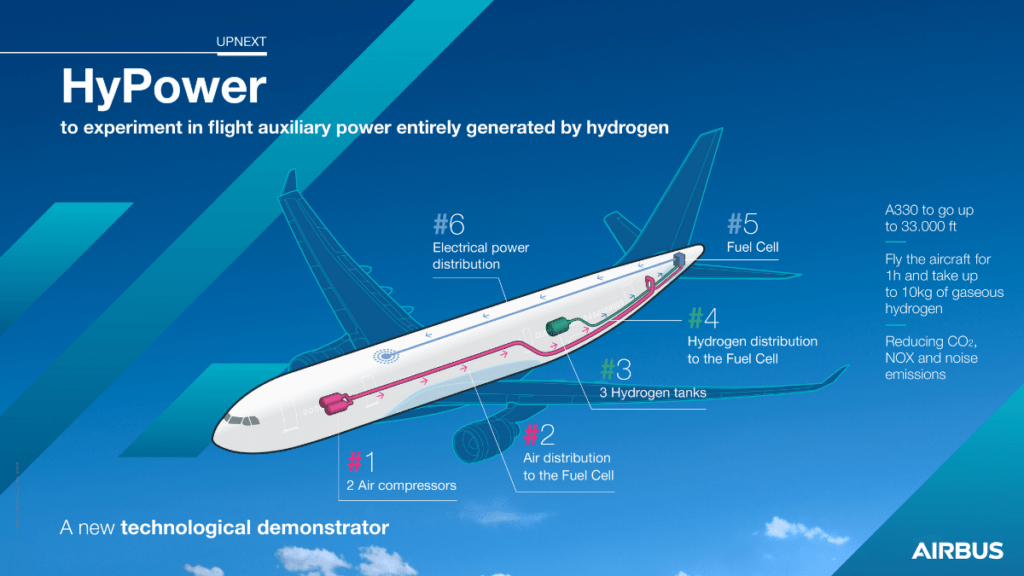
Paris – Airbus UpNext has launched a new demonstrator program to explore, on the ground and in flight, a new architecture for the generation of non-propulsive energy through the use of hydrogen fuel cells.
On conventional airliners, the APU (Auxiliary Power Unit), a small additional engine that runs on traditional jet fuel, provides together with the engines the energy required to power a number of non-propulsive aircraft functions, such as air conditioning, onboard lighting and electric power for avionics. With this new technology demonstrator, led from its facilities in Spain, Airbus UpNext will replace the actual APU of an A330 with a hydrogen fuel cell system that will generate electricity. Known as HyPower, the hydrogen fuel cell demonstrator also aims to reduce the emissions of CO2, nitrogen oxides (NOx) and noise levels associated with a traditional APU.
New design features and integration techniques will also contribute to maturing the safety and operations of future hydrogen-powered aircraft and will demonstrate the stable operation of a fuel cell in-flight, including its restart.
“These tests will mark a new step in our decarbonization journey and ZEROe program through an ambitious flight demonstration that will take to the air by end 2025,” said Michael Augello, CEO of Airbus UpNext. “We want to demonstrate the operability and integration of the system, including refuelling the aircraft with hydrogen. We will demonstrate this system in realistic conditions, climbing to 25,000 ft and flying for one hour with 10kg of gaseous hydrogen on board. However, we cannot do this alone and our cooperation with the Spanish Government and external partners will be key enablers of these series of tests.”
The flight test campaign will utilize a modified Airbus A330 and a ground test bed of the system. Airbus UpNext will procure a production unit for renewable hydrogen to fulfill the entire need for the test campaign.





